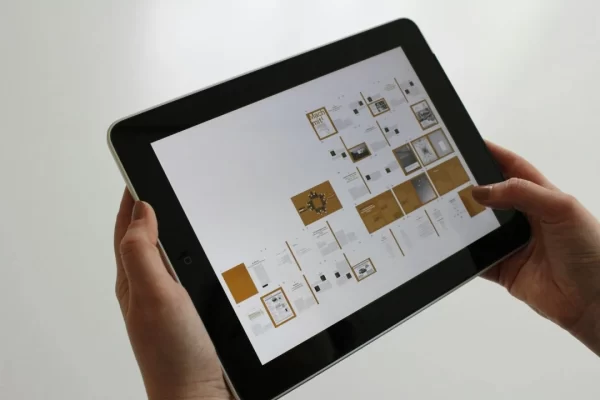Planning a web design project can make or break the success of your website. Poor planning often leads to budget blowouts, frustrating delays, and missed launch dates. But with the right approach, you can create a website that’s both beautiful and functional — delivered on time and within budget.
Let’s walk through the essential steps to ensure your web design project runs smoothly from start to finish.
Key Takeaways
- Careful planning prevents costly delays and budget blowouts.
- Understanding your goals and audience ensures meaningful design choices.
- Continuous updates and smart promotion are key to long-term website success.
Table of Contents
- Key Takeaways
- Why Planning a Web Design Project Matters
- 12 Effective Ways to Plan Your Web Design Project
- Establish Clear and Measurable Goals
- Create a Flexible Project Timeline
- Identify Your Target Audience
- Integrate Search Engine Optimisation (SEO) Early
- Choose a Memorable Domain Name
- Plan Website Architecture and Functionality
- Develop a Strong Content Strategy
- Hire Skilled Designers and Developers
- Test Every Aspect of Your Website
- Prepare for a Successful Launch
- Promote Your Website Effectively
- Keep Your Website Updated
- Frequently Asked Questions
Why Planning a Web Design Project Matters
A well-planned web design project ensures your website meets both business goals and user expectations. Without proper planning, you risk wasted resources, missed opportunities, and a website that fails to connect with your audience.
12 Effective Ways to Plan Your Web Design Project
1. Establish Clear and Measurable Goals
- Set goals that drive decisions, like boosting sales or improving user engagement.
- Break goals into measurable targets, such as “Increase traffic by 20% in six months.”
- Align every design and content decision with these objectives.
2. Create a Flexible Project Timeline
- Develop a realistic schedule with room for revisions and delays.
- Consider industry trends and seasonal peaks when setting launch dates.
- Break the timeline into phases: research, design, development, testing, and launch.
3. Identify Your Target Audience
- Define demographics: age, location, profession, and preferences.
- Map user needs to improve content relevance and site functionality.
- Understand their online behavior to create intuitive navigation paths.
4. Integrate Search Engine Optimisation (SEO) Early
- Plan keyword research before content creation begins.
- Design website architecture with search engines and users in mind.
- Prioritize fast-loading pages, mobile responsiveness, and structured data.
5. Choose a Memorable Domain Name
- Pick a name that’s easy to spell, short, and brand-relevant.
- Use industry keywords when possible for better visibility.
- Secure the domain early to avoid losing it to competitors.
6. Plan Website Architecture and Functionality
- Choose dynamic or static structures based on your business model.
- Include essential features like search, forms, checkout, and navigation.
- Focus on user flow to ensure easy access to key information.
7. Develop a Strong Content Strategy
- Create clear, helpful content tailored to your audience’s questions.
- Focus on landing pages, blogs, and CTAs that encourage action.
- Refresh and update your content regularly to stay relevant.
8. Hire Skilled Designers and Developers
- Partner with experienced web professionals to streamline the process.
- Review portfolios and request mock-ups before committing.
- Skilled designers save time by perfecting the concept before coding.
9. Test Every Aspect of Your Website
- Conduct usability, performance, and cross-browser testing.
- Fix layout, speed, or functional issues before launch.
- Invite fresh eyes to catch overlooked errors or inconsistencies.
10. Prepare for a Successful Launch
- Double-check SEO, links, speed, and mobile-friendliness.
- Create a pre-launch marketing plan to build anticipation.
- Gather initial feedback from users post-launch for quick adjustments.
11. Promote Your Website Effectively
- Use email, social media, and SEO to drive targeted traffic.
- Run paid ads to support organic growth during the early phase.
- Partner with influencers or industry blogs to expand reach.
12. Keep Your Website Updated
- Schedule regular updates for security, design, and content.
- Use analytics tools to monitor performance and user behavior.
- Stay adaptable to industry changes and evolving audience needs.
Frequently Asked Questions
Why is planning important for a web design project?
Planning ensures that your website aligns with business goals, stays within budget, and delivers a smooth user experience from launch day onward.
How long does it take to plan a web design project?
Project planning can take anywhere from 2 to 6 weeks, depending on the site’s size and complexity, but skipping this step can result in costly setbacks.
Should I hire professionals for web design?
Yes, experienced designers and developers turn ideas into polished, functional websites while avoiding common pitfalls like coding errors and weak user flow.
How do I make sure my website stays up to date?
Maintain an ongoing relationship with your web developer and schedule periodic reviews for content, design tweaks, and technical updates.
Conclusion
Considering these twelve steps when planning a web design project will diminish your chances of encountering any issues throughout the process and after the website launch. Moreover, you can use these points as a foundation for creating a reliable online presence that automatically brings clients to your site without making any extra efforts!
Ready to start your journey?
Contact us today to create a website that drives results and grows your business!



